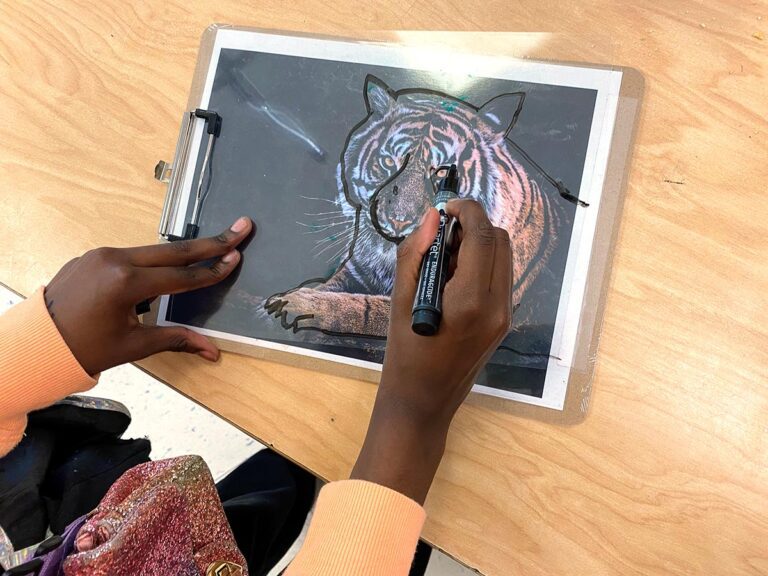There’s something so appealing about yarn! The colors, textures, and artistic possibilities have art teachers wandering down the yarn aisle every time they’re at the craft store. Before you know it, you have a cart full of yarn to add to your collection. Yarn draws students and art teachers alike, making it a “go-to” fun medium in the art room.
Yarn can be a staple supply in a fibers unit—but it doesn’t have to be! There are many other inventive ways to use yarn. Check out five fiber art projects from Sarah Krajewski in the video below and many other neat ideas in the rest of the article!
Let’s explore five reasons why art teachers love yarn!
1. Tactile
Using yarn is a tactile experience. Yarn can be fuzzy, velvety, or even bumpy! Its soft, squishy texture makes it appealing. Students enjoy handling it and weaving it through looms to make tapestries. Every once in a while you may find a student using a yarn skein as a pillow!
Artwork containing yarn also makes viewers want to reach out and run their hands over or through it. This makes for a prime opportunity to teach proper etiquette when viewing tactile pieces. Show students how they can still enjoy and appreciate artwork without touching it!
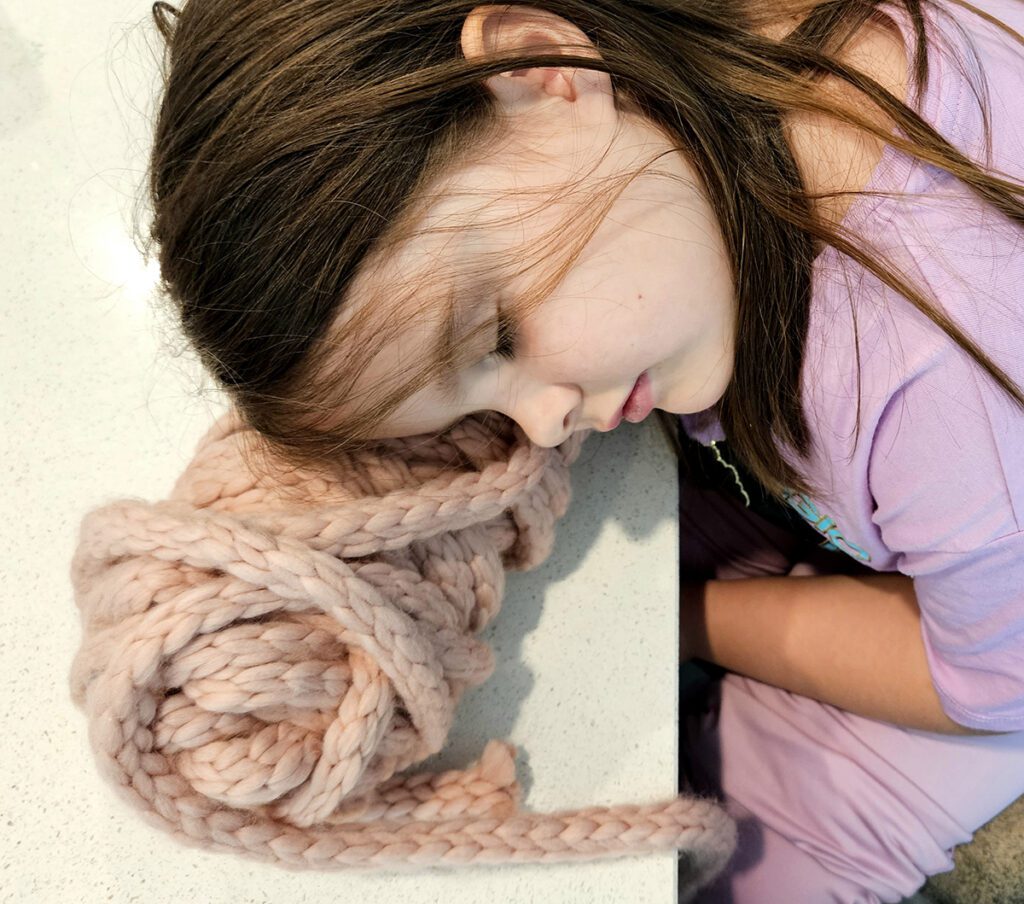
2. Sustainable
You can purchase yarn made of natural fibers like cotton, wool, or bamboo. These options cut down on the use of synthetic materials which contribute to pollution and don’t break down easily in a landfill. While there are plenty of synthetic yarns out there, the abundance of sustainable options makes it easy to make eco-friendly choices. Talk to students about the difference between the types of yarn to help them make responsible material choices in the future.
3. Connectable
Yarn has been around for thousands of years and it has a rich history intertwined with many cultures. Peruvians use tapestries to tell stories and keep their history alive. The Huichol people of Mexico create elaborate yarn paintings with the same patterns their ancestors used to communicate with deities. Even ancient Egyptians spun yarn in textile workshops.
While it has a deep connection to many ancient cultures, yarn hasn’t lost its appeal in the modern world. Every day people participate in yarn bombing, where they cover objects in crocheted or knitted yarn to bring joy to those who see it. Contemporary artists also use yarn in their artwork, like Victoria Villasana, who overlays yarn onto photographs to make social commentaries. Molly Murphy Adams uses yarn and other mediums to reflect her mixed culture background. Yarn is a great option to connect to the past or make something new in the present.
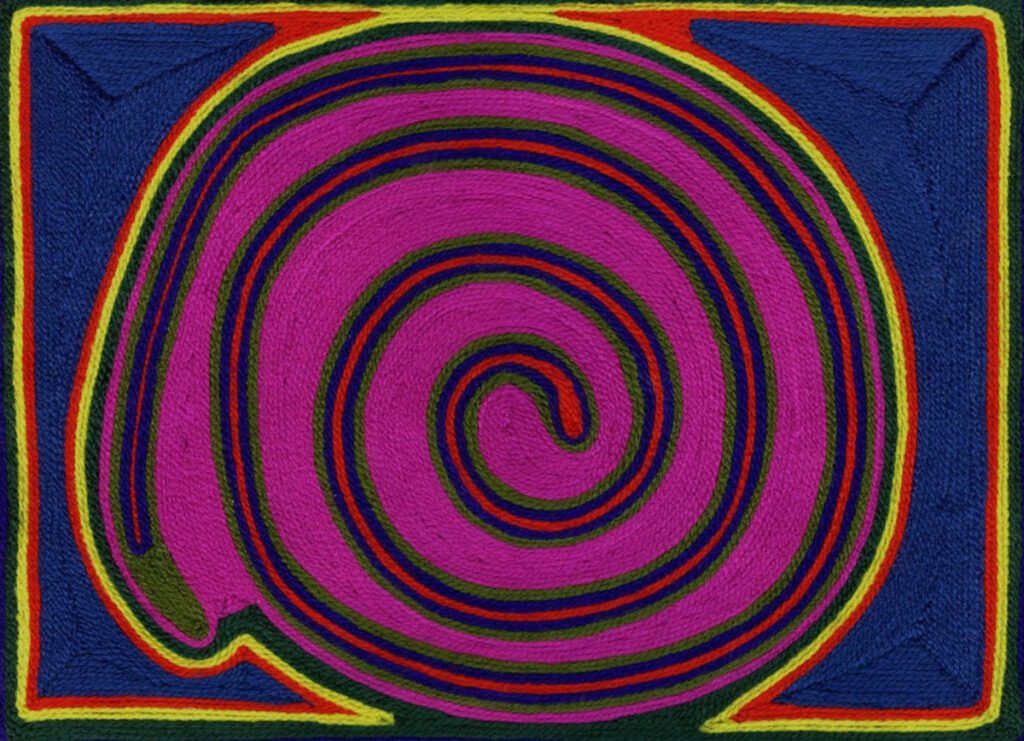
4. Scalable
You can use yarn in small-scale projects like jewelry or large-scale ones like installations. Yarn can create a personal item or transform an entire space. Lauren Porter is famous for her life-sized knit Ferrari, but she also creates smaller pieces, like a knit teapot. Whether your vision is big or small, yarn can do it all!
5. Versatile
Yarn has so much potential! Yarn spans the range of visual arts from handcraft to fine art. Add yarn to two-dimensional or three-dimensional artwork. Students can use it to create something functional, aesthetic, or both.
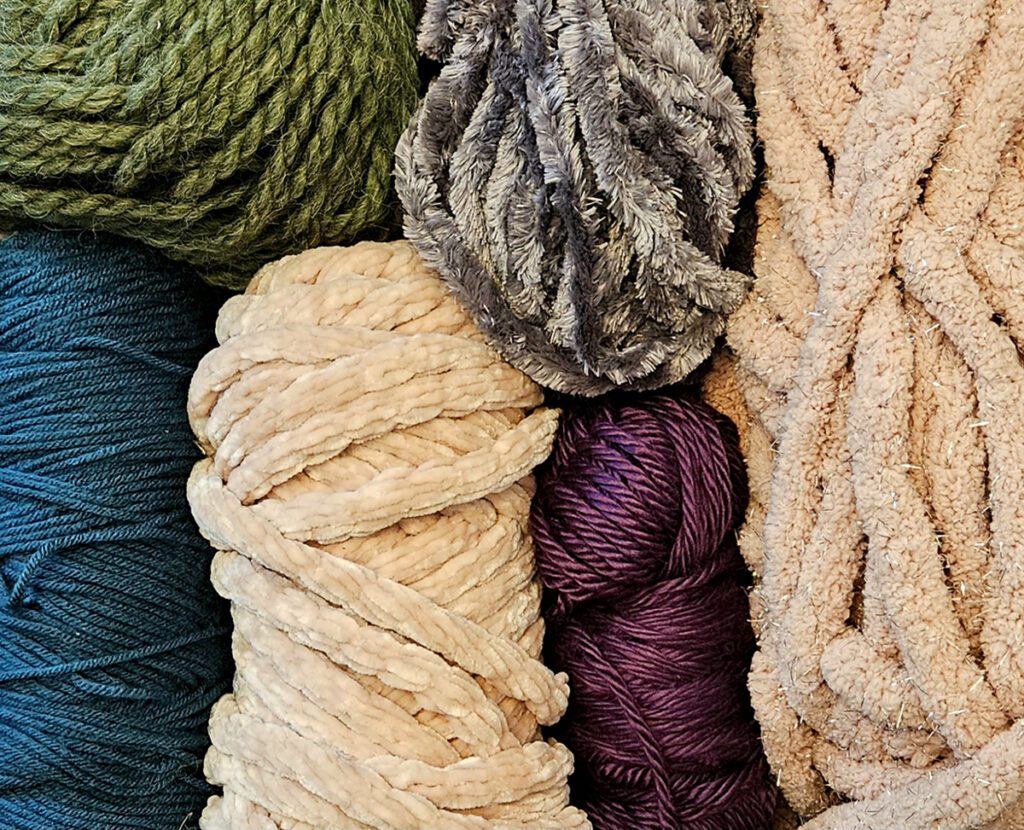
Here are eight fun yarn projects your students will love.
1. Weaving
Even super young students can be successful with simple cardboard loom weavings. The up-and-down motion is cathartic and easy to get the hang of. Students who want to level up their weaving projects can make larger tapestries or create three-dimensional weavings, like pouches. Watch the PRO Learning Pack, Basic Weaving Techniques, if you’re new, or Advanced Fiber Arts, if you’re a seasoned pro. Then, take the lesson ideas in the Wonders of Weaving Collection in FLEX Curriculum to your students.
2. Yarn Painting
Traditionally, yarn painting uses wax to adhere the yarn design to a board. In the art classroom, students can create yarn paintings with glue. Yarn paintings can be intricate portrayals of landscapes and people or they can be simple patterns and colors. Yarn painting is a great art form that accommodates all students’ skill levels and interests!
3. Yarn-Fetti
Do you want to cut down on waste and find a way to use all those extra yarn scraps? Try turning them into yarn-fetti! Add them as a little extra flair to any mixed-media project.
4. Punch Needle Designs
This is a great way to switch up a surface design unit or lesson. Punch needling allows students to embroider using yarn. It goes faster than traditional embroidery with thread, perfect for short attention spans and students who want to see results fast. Check out the Punch Needle Design Lesson in FLEX Curriculum to guide your students through the process with step-by-step instructions!
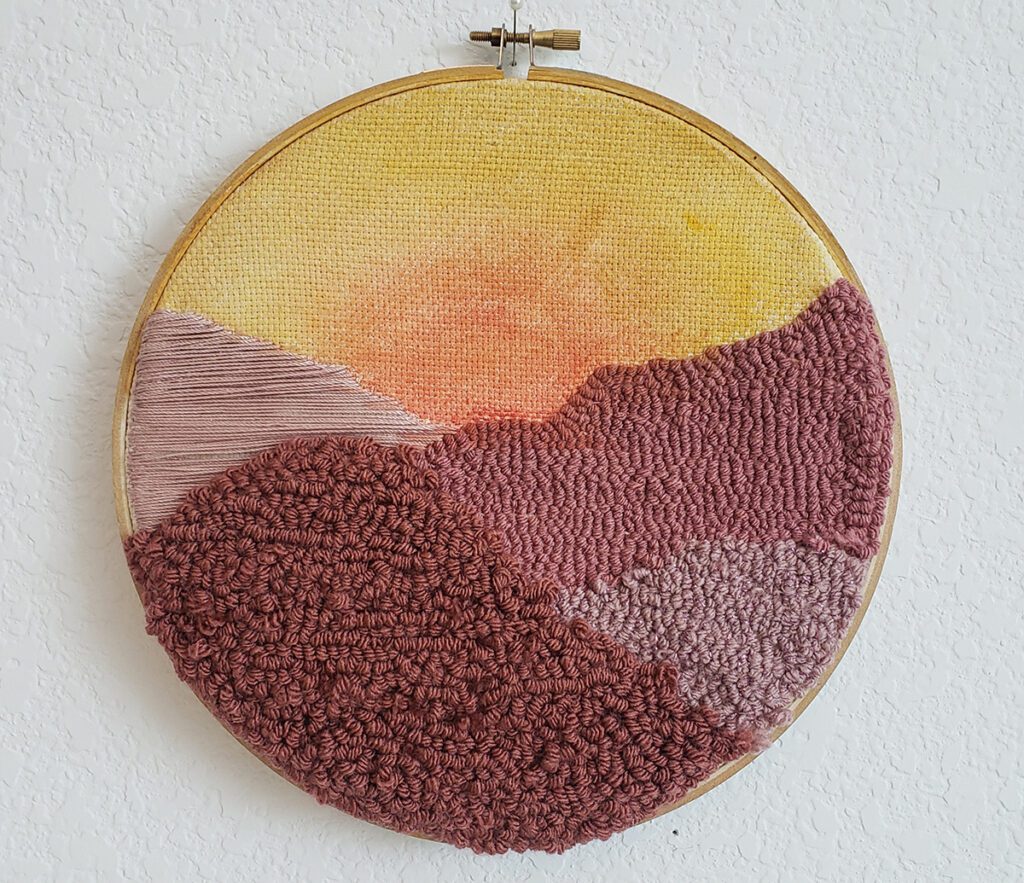
5. Yarn Installations
If you have students who like to think big, yarn installations are the way to go! Create an installation to brighten up a corner of your school or bring your installation into the community.
6. Crocheting
A decade or so ago, crocheting was considered a “grandma activity.” In the last few years, it’s made a glorious comeback among the younger generations! They love to crochet everything from simple coasters to complex amigurumi stuffed animals and clothes. Brush up on your crocheting skills or start from scratch with the Pack, Getting Started With Crocheting, in PRO Learning.
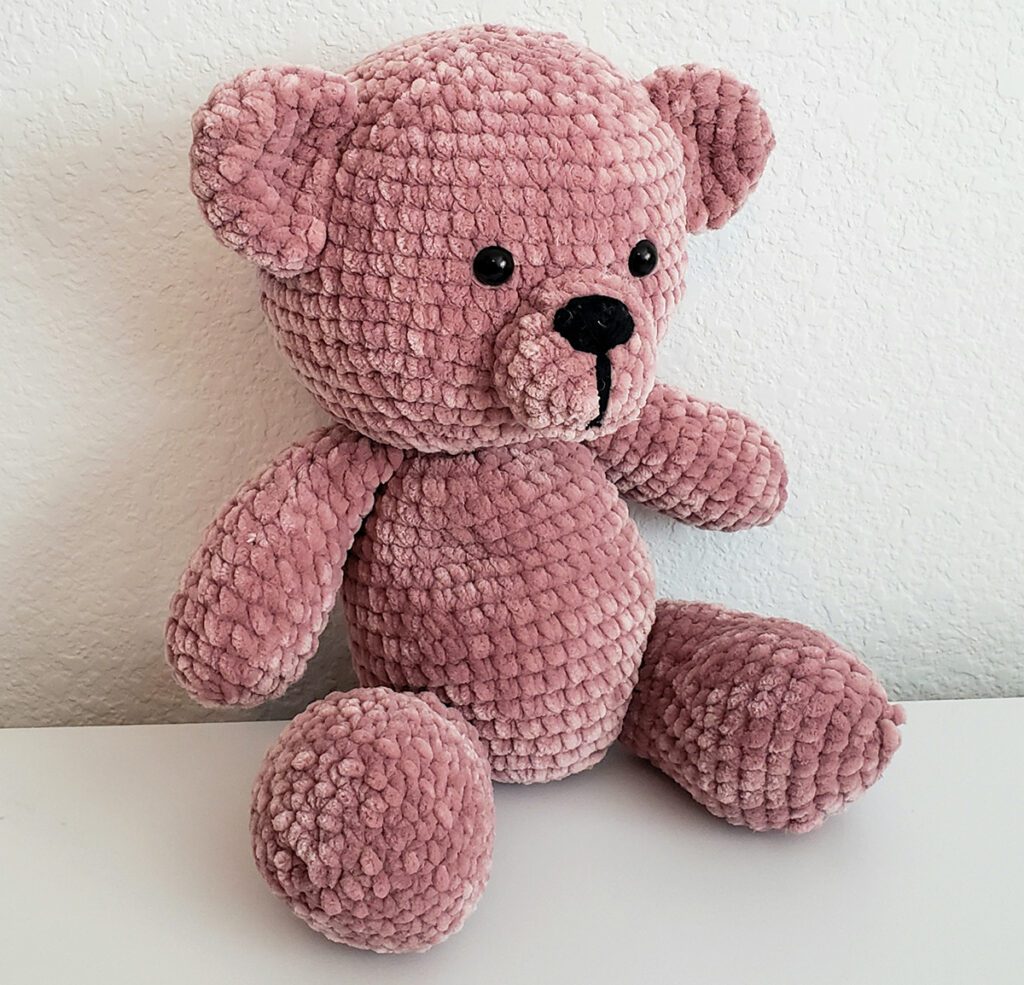
7. Mixed Media
Yarn is a great addition to mixed-media artwork because students can combine it with pretty much anything! Use it as a surface design on top of existing two-dimensional artwork or add unique lines by laying it onto a mono-printing or gel plate. Glue or sew yarn onto one area of a drawing or painting to serve as a delightful accent. Read this article to see how easy embroidering on paper can be with fun artists to introduce to your students.
8. Textile Sculptures
Yarn usually isn’t the first thing students think of when they select sculpture materials. However, all yarn needs is an armature! Students can wrap yarn around the entire wire or cardboard armature or they can accent an existing sculpture with yarn. Students can press yarn into wet plaster or clay to create surface texture. Try a textile sculpture with the Fiber Cactus Sculpture Lesson in FLEX Curriculum.
There are so many reasons to love yarn! It’s tactile and sustainable. It has traditional roots and modern-day appeal. Students can use it to make small artworks to bring home or big projects to transform an environment. Its versatility means students can use yarn to make weavings, yarn paintings, punch needle surface designs, installations, crocheted creations, mixed media art, and textile sculptures. The possibilities are endless, making yarn a medium art teachers and art students obsess over!
What is your favorite yarn project?
Why do your students love yarn?
Magazine articles and podcasts are opinions of professional education contributors and do not necessarily represent the position of the Art of Education University (AOEU) or its academic offerings. Contributors use terms in the way they are most often talked about in the scope of their educational experiences.





